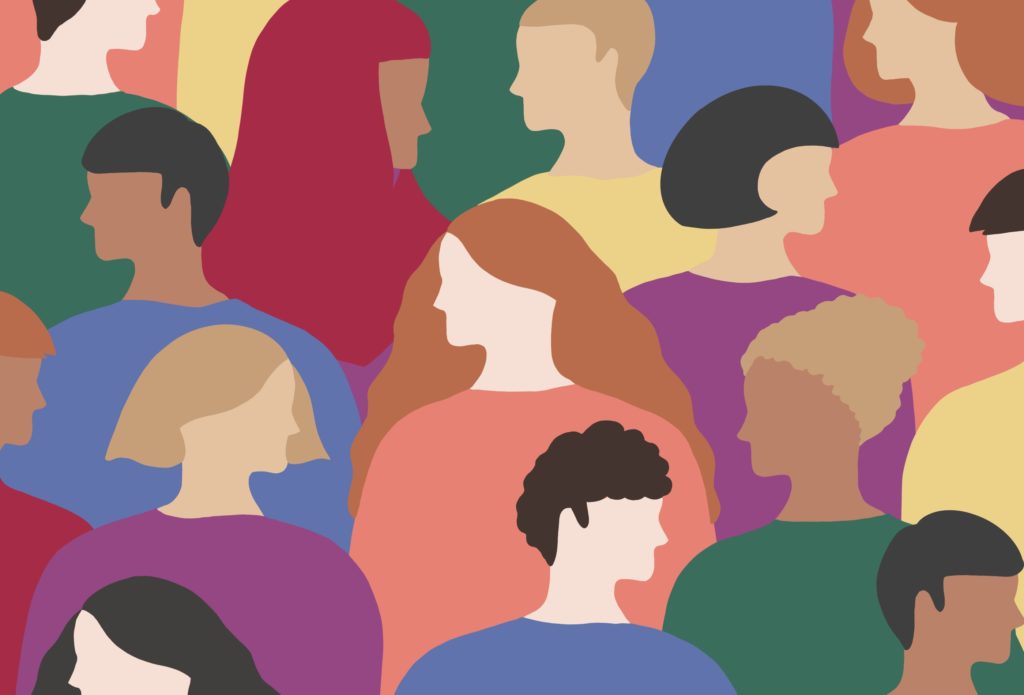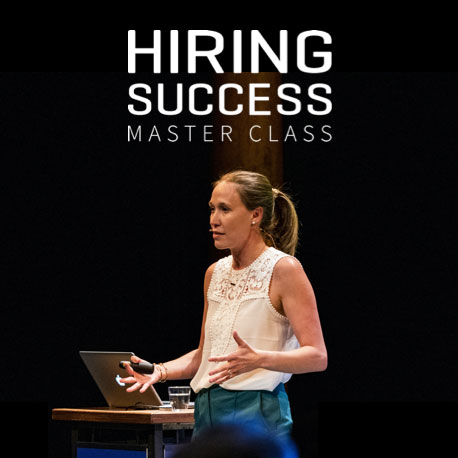In light of current events, many employers are beginning to have the difficult but necessary conversations about what they can do to improve their organizational Diversity and Inclusion (D&I). And with good reason. Companies with greater diversity enjoy better performance on things like decision-making, innovation, and profits, and they also evaluate themselves more favorably.
All of this is valuable, but organizations must also think about the Inclusion piece of D&I. We might be able to achieve diversity on paper, but how can we ensure we’re addressing that equally vital inclusion component? One way to do this is to expand the definition of diversity to include key factors that shape how we communicate, the settings in which we thrive, and the types of work we do well—in other words, the diversity of personality.
Being attentive to personality during the hiring process and when coaching employee growth and development can be a powerful way to improve inclusion. Let’s explore this further.
Table of Contents
- Expand how we think about diversity
- The secret weapon of cutting-edge D&I: traditional behavioral science
- Inclusive leadership as the key to success
- Science-backed personality models as diversity tools
- Continuing to expand diversity
- Embody a D&I leader in the 2020’s
Expand how we think about diversity
As we discuss the concept of “diversity,” it’s worthwhile to take a closer look at what we mean by that term, and how adding some breadth to the concept can be productive for HR leaders. One common approach is to measure diversity by the percentages of the payroll that include individuals of different ages, ethnicities, and gender expressions.
It is so important to have representation of all of these demographic groups within an organization, but we can’t stop there. Catalyst, a nonprofit organization working with CEO’s around the world to improve D&I, points out in their report, Getting Real About Inclusive Leadership:
“Aiming to improve your company’s demographic diversity (e.g., gender, ethnicity, ability) without also aiming to improve employee experiences of inclusion is not good for employers or employees.”
As a personality psychologist, I believe it’s important to understand how our personalities contribute to the varied viewpoints and unique experiences that produce benefits for a workplace, and how that understanding can promote the Inclusion part of D&I.
The secret weapon of cutting-edge D&I: traditional behavioral science
To start, we can structure the discussion around a well-known framework of traditional behavioral science: the Big Five model of personality. This identifies five dimensions of personality: openness, conscientiousness, extraversion, agreeableness, and emotional stability.
A company might achieve good diversity metrics, but still end up with teams full of people who are similar to each other in particular personality dimensions. Thus if an individual is high on extraversion, they are more likely to be energetic, readily engage in extended conversations with colleagues, and be energized by taking risks.
You can imagine how a team full of people high in extraversion could have some challenges. This team might chronically neglect lower-intensity or solitary tasks. They might be less productive because they spend a lot of time chatting with each other. And they might make decisions that tend to be pretty risky.

Just like me?
The team could include both men and women, a representative sample of different ethnicities, and individuals from different generations—but still represent a lack of personality diversity. This might happen because we tend to select individuals who are a lot like us—you could call this a “just like me” bias. Additionally, if the team includes staff with similar jobs, for example a team of sales representatives, it may attract similar personalities.
When we know the personality profiles of team members, we can begin to understand some important aspects of their behavior, from how they achieve maximum productivity to how they communicate with others or respond to the everyday stressors of their job. The goal is to use that information to help people do their best, which includes matching them with complementary teammates to set them up for success.
Inclusive leadership as the key to success
This brings us to the challenge of creating organizational leaders who foster inclusive environments for all of their employees, thereby creating an environment for the whole team to flourish. In their report, Catalyst proposed a leadership model focused around two key dimensions: leading outward and leading inward.
Each is comprised of three core behaviors. This model explained nearly fifty percent of the variance in the employee experience of inclusion, e.g., feeling valued, trusted, and psychologically safe. Inclusion was positively associated with team problem-solving, engagement, intent to stay, and innovation. Personality data can be a valuable tool to improve leaders’ ability to lead inclusively. Here’s how.
Leading outward is associated with accountability, ownership, and allyship. Inclusive leaders hold team members accountable and help them to set realistic goals. They guide their team to self-directed problem solving, and they engage in difficult discussions around biases and discrimination. If leaders understand the personalities of their team members, they can more easily target their messaging in ways that are more effective.
“Aiming to improve your company’s demographic diversity (e.g., gender, ethnicity, ability) without also aiming to improve employee experiences of inclusion is not good for employers or employees.”
For example, if they know that an employee is lower in conscientiousness and therefore more likely to forget deadlines and flit from task to task, they can set up a more structured check-in approach that encourages them to review their goal progress more frequently. Additionally, a leader’s understanding of their own personality is important, as it can inform how they can improve on the behaviors associated with both leading outward and leading inward.
Leading inward behaviors are curiosity, humility, and courage. Inclusive leaders actively work to understand viewpoints different from their own, they take ownership of their own mistakes, and they stand up for what they believe in, even when it is difficult and risky. Each of these behaviors will come more naturally to some than to others.
Knowing and understanding their own personality can help leaders determine which of these behaviors they may need to work harder at. For example, if they are someone who is high in Extraversion and therefore likes to be the center of attention, they may need to work harder on actively listening to others’ points of view and asking follow-up questions.
Science-backed personality models as diversity tools
As part of the collaboration and selection process, talent acquisition leaders and hiring teams can bring the tools of behavioral science to the discussion around hiring in order to capitalize on diversity of personality. Let’s break this down into a four-step process:
- Find a valid and reliable assessment of personality that can help inform decisions. When focusing on employee success and team building, TA professionals should consider an assessment that is based in the Big Five model of personality, also referred to as the Five Factor Model. This model of personality is the most predictive of objective work performance across roles and industries. Another important consideration is the usability of the assessment. Convoluted or lengthy assessments will lead to considerable candidate drop-off.
- Train team leaders on the importance of personality diversity and how to consider personality in management decisions. Once an appropriate assessment has been selected it can be administered to job candidates early in the process. Team leaders must then be trained to understand how to consider this data from hiring to onboarding and beyond.
- Make good matches. Organizations can match candidates to best fit roles, and can use the personality data to inform structured interviews around the behavioral requirements of the role. Additionally, they can use it to help build teams diverse enough to be both innovative and stick to requirements and deadlines.
- Put personality to work. Finally, organizations can use personality data to help establish inclusive work environments. Improving communication between team members through personality-based insights ensures that all team members feel like they aren’t just invited to the table, they’re also invited to play a part in making the pivotal decisions at that table.
Continuing to expand diversity
When we recognize and value personality as a source of diversity, it helps us begin conversations that can facilitate further expanding D&I programs. For example, organizations can enhance the value they gain from a neurodiverse pool of talent by recognizing the unique skills individuals can bring to the workplace, particularly when paired well with complementary supports.
Hiring managers can also expand the talent pool to include workers returning to the paid workforce after time away, such as those who have cared for family members. Finally, inclusion of remote workers and flexible scheduling enables valuable geographical diversity and accommodates for individuals who need flexibility to thrive.
Embody a D&I leader in the 2020’s
When organizations take an innovative approach to today’s most important workplace issues, we all stand to benefit. By expanding our understanding of diversity and valuing both the “diversity” and “inclusion” pieces, the value of initiatives is boosted further. Personality data can improve the quality of our understanding of our job candidates and team members.
By truly getting to know the people around us, we can bring them into business operations more meaningfully, amplify their voices, and then collectively benefit from that enriched collection of ideas, perspectives, and ways of understanding the world around us.

 Enroll in the Master Class & earn 6 SHRM credits
Enroll in the Master Class & earn 6 SHRM credits